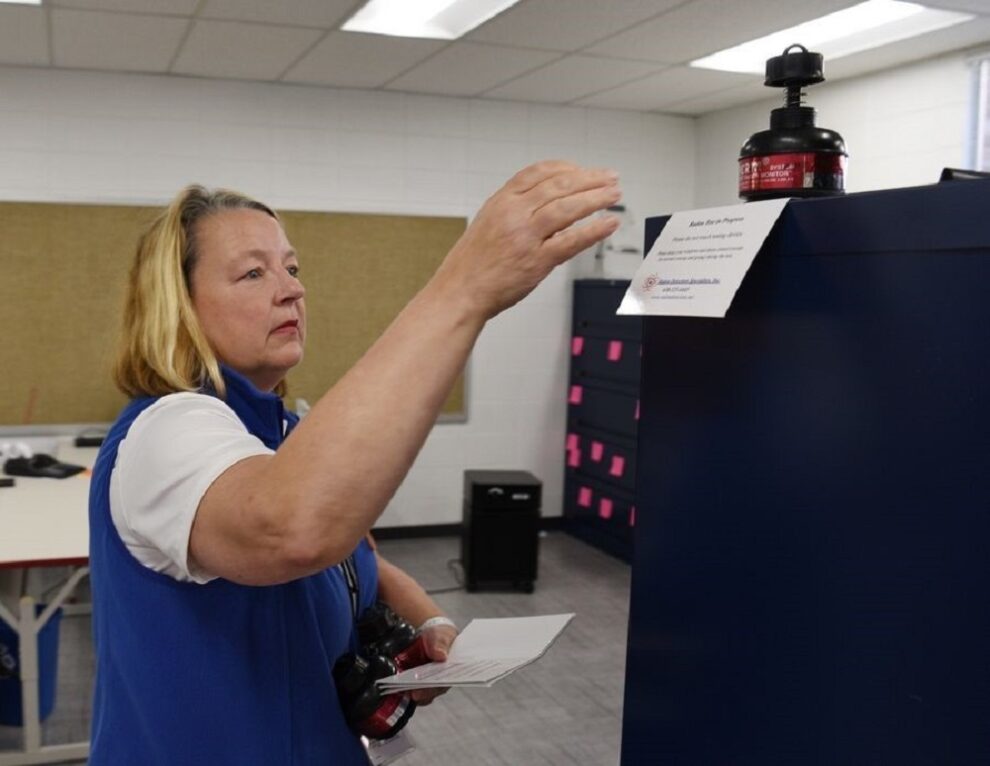Despite recommendations that schools be tested for radon every five years, 85 out of 100 suburban school districts have not done so — and more than half of the 15 that did found elevated levels of the radioactive gas in at least one building.
Even among districts that tested, most did not test all their buildings as recommended.
That’s according to a Daily Herald investigation into the 100 districts’ compliance with an Illinois State Board of Education recommendation that school buildings be tested every five years for the gas that the U.S. Environmental Protection Agency and U.S. Surgeon General’s office estimate is responsible for more than 21,000 lung cancer deaths annually.
“I wouldn’t be surprised if this is the first time some of these school districts are hearing the word ‘radon,'” said Patrick Daniels, a health physicist and radon program manager for the Illinois Emergency Management Agency. “Radon is a very big risk most people aren’t aware of, or don’t understand.”
The radon testing recommendation was part of a 2009 legislative package that also “requires” school districts to report test results to IEMA, though compliance with this aspect of the law appears scattershot as well.
“Our district wanted to be proactive and comply with some of the new recommendations that have been coming out so we could be ahead of the curve if it became required,” said Scott Ney, director of facility operations at Geneva Unit District 304.
Six of the district’s 11 buildings were tested in 2021, costing the district $12,200, according to records obtained through a public records request. The other buildings are slated to be tested soon, Ney said.
Of the 417 detectors deployed in those six buildings, five showed radon levels above 4 picocuries per liter of air, the accepted limit. Another $6,914 was spent to remediate the problems.
“Mitigation costs can vary depending on the location of the leak in the building,” said Dan Potter, who operates DuPage Radon Contractors and also runs the Illinois Radon Policy Task Force. “But these radon mitigation systems are pretty dependable, and once they’re installed, they work.”
Millburn Elementary District 24 officials in Lake County just installed a system a few weeks ago after elevated levels were discovered in an elementary school. Testing and remediation costs combined were $11,345, records show.
“We wanted to make sure everyone’s safe, that’s our priority,” said District 24 Superintendent Jason Lind.
Some of the largest suburban school districts — including Elgin Area District U-46, Indian Prairie Unit District 204, Northwest Suburban High School District 214 and Wheaton Warrenville Unit District 200 — have not done any testing, records show. Officials from some of those districts noted the state is only recommending the action, not requiring it. District 200 officials said testing hasn’t taken place at any of its 20-plus buildings because “our schools do not have basements.”
“It doesn’t have to be a basement, it’s anything with ground contact,” said Kirsten Schmidt, vice president of Westmont-based Radon Detection Specialists. “We find high levels in rooms on slabs all the time.”
The state law reads that districts should test in “every occupied school building.”
Since the 2017-2018 school year, Elk Grove Elementary District 59, Leyden High School District 212, Northbrook Elementary District 27 and Northbrook Elementary District 28 in suburban Cook County reported test results. Elevated levels were detected in a classroom in District 28.
In DuPage County, Downers Grove Elementary District 58, Glen Ellyn Elementary District 89 and Naperville Unit District 203 reported testing in just some of those districts’ buildings. Elevated levels were found in two classrooms at one of the four schools tested in District 58 and one classroom in District 203 also reported unsafe levels, reports show.
In addition to District 304, East Aurora Unit District 131 was the only other school district in Kane County to perform tests in the past five years. St. Charles Unit District 303 performed tests six years ago and Kaneland Unit District 302 tested in 2013.
District 131’s testing in 2018 was one of the most comprehensive in the suburbs. In all, 1,603 detectors were deployed at 25 district buildings resulting in 36 unsafe readings at eight different schools. The cost to the district for both testing and remediation was $35,600, district records show.
In McHenry County, Huntley Unit District 158 tested nine schools in 2022. Only one of the 90 detectors deployed recorded unsafe radon levels.
Barrington Unit District 220, Fremont Elementary District 79, Lake Zurich Unit District 95 and Woodland Elementary District 50 were the only Lake County school districts beside District 24 to report radon testing in the past five years. All but District 50 reported some detectors with elevated radon levels. Both District 220 and District 95 officials reported spending nearly $60,000 each to test and remediate leaks.
District 79 officials took advantage of a state program that trains staff on how to use radon detectors, and performed the testing with state-issued equipment, saving thousands of dollars.
Schmidt said the tests are small, well-marked unobtrusive devices placed in classrooms and other spots where people congregate.
“It’s not uncommon to find elevated levels, but I’ve never had a case where we’ve had to shut down a room or anything,” she said. “It’s really about prolonged exposure, so how long is too long to go without testing? It’s always fixable.”
Radon exposure is more likely to affect teachers more so than students, Schmidt said. That’s because teachers and other district staff are apt to remain in the same room year after year.
Teacher unions back the ISBE recommendation.
“The Illinois Federation of Teachers supports efforts to ensure our schools are safe and healthy for all students, teachers and staff,” said IFT President Dan Montgomery. “To that end, we urge districts to conduct any ISBE-recommended testing, such as radon testing, that impacts the health and safety of our members and the students they serve.”
Potter’s task force is looking to draft legislation that would change radon testing from a recommendation to a requirement. The group formed less than two year ago and was already successful in passing legislation requiring landlords to test for radon in rental units, which goes into effect next year.
“We’ve known that radon kills for 30 years now,” Potter said. “We’re trying to get a mandate for school testing.”
Source : Daily Herald





































